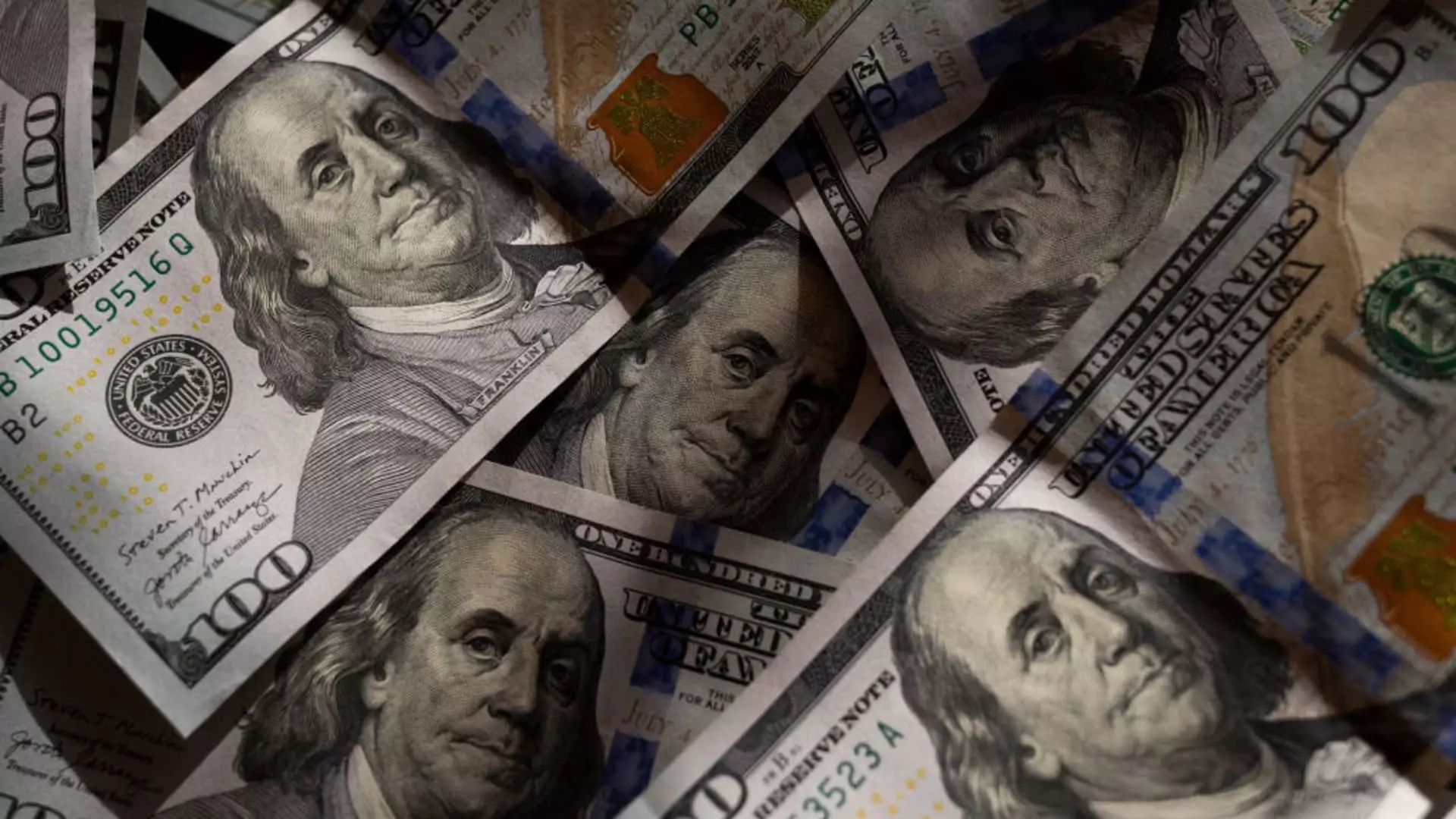The U.S. dollar is in the midst of what can only be described as a troubling decline, casting a shadow over global financial markets and stirring unease among central banks worldwide. The dollar index has nosedived over 9% this year alone, fueling skepticism about the stability of American financial policies and prompting a significant withdrawal from U.S. assets. Investors are not merely fretting over fluctuations; they seem to harbor a deep-seated crisis of faith, evidenced by Bank of America’s Global Fund Manager Survey indicating that a staggering 61% of major investors expect further depreciation—an outlook not witnessed in nearly two decades. This exodus from the dollar resonates far beyond the U.S. borders, leaving waves of uncertainty that affect inflation rates and currency valuations globally.
Despite the grim picture painted by those who directly handle these economic levers, one wonders if the decline in the dollar is ultimately a mixed blessing. As analysts like Adam Button, chief currency analyst at ForexLive, suggest, the dollar’s weakness might provide some financial breathing room for foreign central banks. Yet this notion fails to capture the full scope of the grave implications a falling dollar carries. The fact that central banks—who should ideally be stabilizing economic conditions—are relieved by the dollar’s decline begs the question: what kind of long-term consequences are we flirting with?
The Ripple Effect on Global Currency Markets
While safe havens such as the Japanese yen and Swiss franc have burgeoned due to the dollar’s descent, not all currencies are faring so well. The dollar’s weakening has bolstered other currencies, with the yen and franc gaining over 10% against the greenback. This scenario is somewhat comforting for developed economies but throws emerging markets into disarray. It’s particularly alarming when currencies like the Vietnamese dong and Turkish lira are hitting record lows, exposing vulnerabilities that could lead to severe economic instability.
Surprisingly, the chaos isn’t just an isolated phenomenon. The strengthening of some currencies against the dollar could flicker a light of opportunity on the horizon, especially for nations with significant dollar-denominated debt. Lowering the real debt burden may provide a pathway for growth, yet the complexity of currency fluctuations means that not all emerging markets can bask in this potential relief. The paradox lies in the fact that while a weaker dollar can lead to reduced import costs and an apparent easing of inflation, emerging markets also face the harsh reality of reduced export competitiveness. With economic stakes running high, the need for financial navigation grows increasingly complicated.
Navigating the Stormy Waters
In the increasingly interconnected global economy, the importance of coordinated currency management cannot be understated. Emerging market nations are caught in a precarious balancing act: a weaker currency could discourage foreign investments and result in capital flight, while strengthening it may trigger a slew of retaliatory moves from the U.S. administration. Countries holding sizable dollar-denominated debt, like Indonesia, may be particularly hesitant to cut interest rates too drastically, as it risks exacerbating financial turmoil. Such a precarious situation begs the question: how much longer can these nations endure this cycle of economic insecurity?
It’s crucial to recognize that the downward spiral of the dollar does bring some advantages. Nations like Switzerland, whose economies are heavily reliant on exports, may even see the dollar’s devaluation as an opportunity for strategic market adjustments. However, they face inherent risks: the potential of igniting inflation or sparking retaliatory trade tariffs puts policymakers in a tight corner. When the sheer act of adjusting currency values can become a weapon in geopolitical skirmishes, one’s ability to maneuver becomes severely restricted.
The Road Ahead: A Call for Vigilance
As we forge ahead, the path appears fraught with uncertainty, laden with both opportunity and peril. Central banks globally must tread cautiously, seeking to avoid currency wars that could plunge the world into further economic instability. The dynamics of global trade negotiations will shape future decisions, with nations increasingly aware that their currency actions may attract retaliation or accusations of manipulation.
In this climate, complacency would be a grave mistake. The U.S. dollar’s decline presents an opportunity to reassess assumptions about currency stability and international trade. The need for vigilance and strategy has never been more pronounced, as the world grapples with an economic landscape that feels both volatile and ripe for significant change. The challenges ahead will undoubtedly test the resolve of policymakers, investors, and ordinary citizens alike. They must steadfastly navigate these tumultuous waters, ensuring that the dollar’s descent does not drag global economies into a quagmire of uncertainty and upheaval.


Leave a Reply